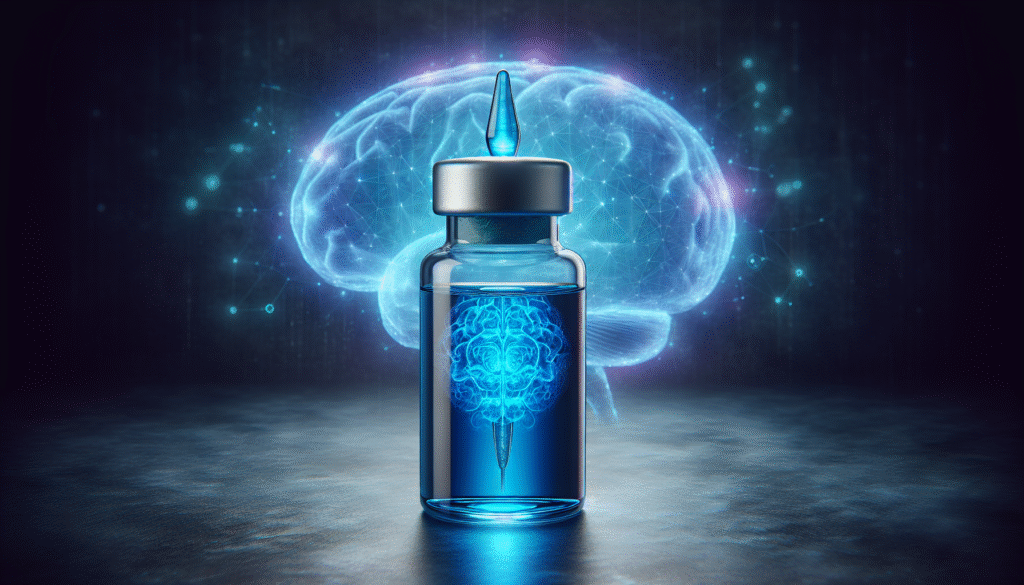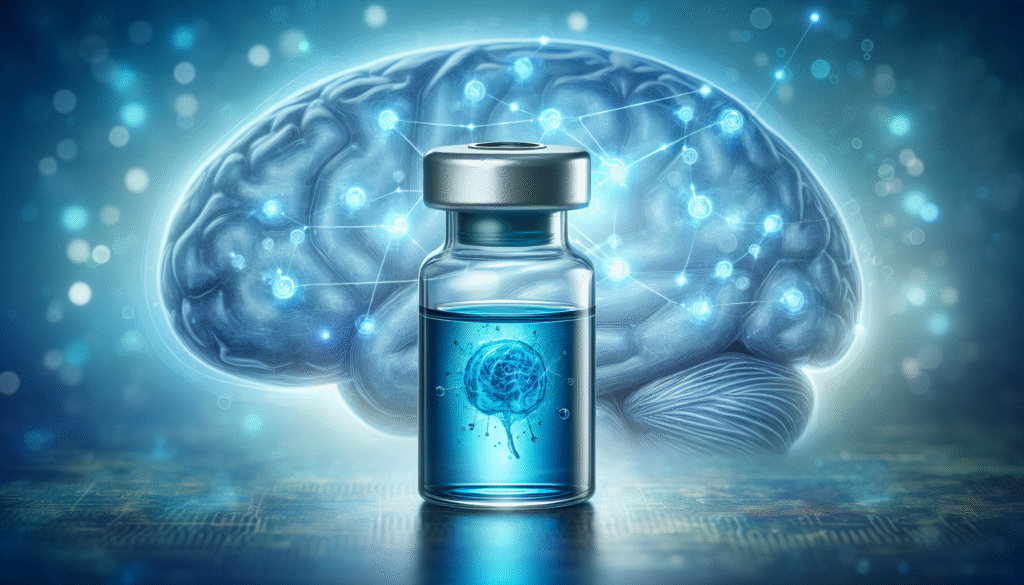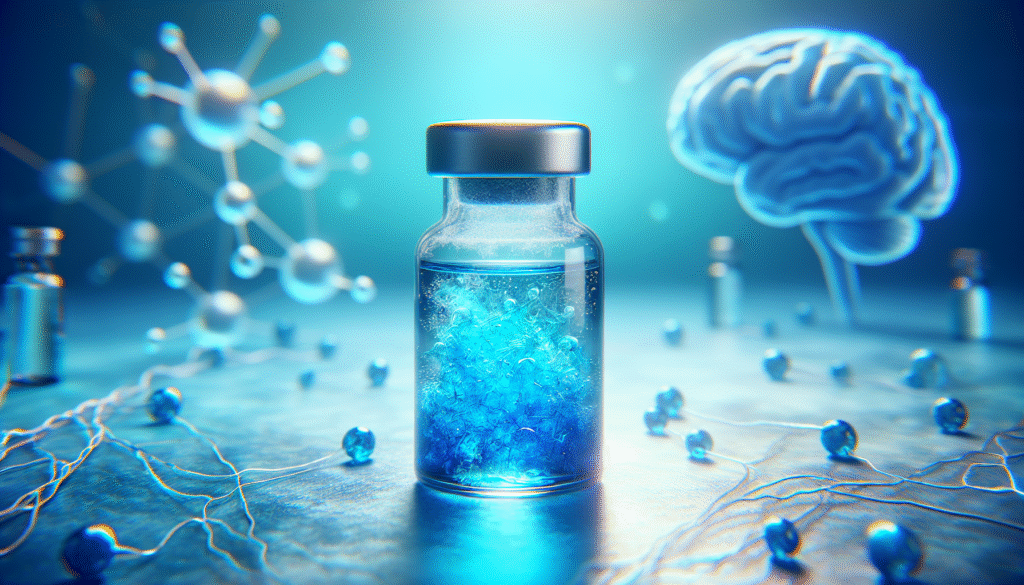
What if there was a compound that could potentially improve your brain metabolism and energy levels? Methylene blue, a synthetic compound with a history in medicine, has shown remarkable effects on cognitive functions and overall brain health. This article will delve into how methylene blue influences brain metabolism and energy levels, supported by research and evidence.
Understanding Methylene Blue
Methylene blue, or methylthioninium chloride, is a well-established chemical compound originally developed as a dye. Its use has expanded over the years to include applications in the medical field, such as treating methemoglobinemia and, more recently, in neuroscience research. Understanding the chemical structure of methylene blue is critical to grasp its function in brain metabolism.
Chemical Structure and Properties
The molecular formula of methylene blue is C16H18ClN3S. It has a complex structure that enables it to penetrate cell membranes efficiently. This permeability is essential for its functioning in biological systems, particularly in the brain, where metabolic processes thrive on compounds that can easily cross the blood-brain barrier.
Historical Context
Historically, methylene blue has been utilized in various medical applications, including as an antiseptic and analgesic. Its neuroprotective properties emerged in scientific literature, drawing attention to how it affects cognitive processes. This context is key to understanding its relevance in neurobiology today.
The Role of Brain Metabolism
Brain metabolism involves the biochemical processes that provide energy to brain cells (neurons) and facilitate communication between them. Neurons rely heavily on aerobic metabolism, utilizing glucose and oxygen to produce ATP (adenosine triphosphate), the energy currency of the cell. Understanding how different compounds impact these processes is essential for exploring potential therapeutic avenues.
ATP Production in Neurons
Under normal conditions, neurons generate ATP through oxidative phosphorylation. This process occurs within the mitochondria, where nutrients are metabolized to produce energy. Methylene blue has shown potential in enhancing mitochondrial function, potentially leading to increased ATP production.
Impact of Mitochondrial Dysfunction
Mitochondrial dysfunction is a contributing factor to several neurodegenerative diseases, including Alzheimer’s and Parkinson’s disease. Impaired energy metabolism can lead to neuronal damage and cognitive decline. Research indicates that methylene blue could alleviate some of these effects by enhancing mitochondrial efficiency.

Methylene Blue and Energy Levels
How does methylene blue enhance energy levels in the brain? The compound contributes to brain energy metabolism through several mechanisms.
Electron Transport Chain Optimization
The electron transport chain (ETC) is a series of complexes within the mitochondria that play a critical role in ATP synthesis. Methylene blue acts as an electron acceptor in the ETC, facilitating the transfer of electrons. This mechanism can enhance ATP production, thereby increasing overall energy levels in brain cells.
Neuroprotective Effects
Methylene blue has exhibited neuroprotective properties by preventing oxidative stress, a condition characterized by the excessive presence of free radicals. Oxidative stress can lead to mitochondrial damage and energy depletion. By scavenging free radicals, methylene blue may promote a healthier environment for neuronal function and energy maintenance.
Promoting Neuroplasticity
Neuroplasticity refers to the brain’s ability to adapt and reorganize itself in response to experiences and environmental changes. Enhanced energy levels can improve neuroplasticity, and studies indicate that methylene blue can promote this adaptability, positively affecting learning and memory.
Clinical Applications
The potential applications of methylene blue in clinical settings are vast, primarily due to its effects on brain metabolism and energy levels.
Treatment of Neurodegenerative Disorders
The link between mitochondrial dysfunction and neurodegenerative disorders presents an opportunity for methylene blue in therapeutic strategies. Clinical trials have indicated benefits in patients with Alzheimer’s disease, suggesting that methylene blue may slow cognitive decline by improving energy metabolism.
Cognitive Enhancement
There is growing interest in the use of methylene blue as a cognitive enhancer. Studies have explored its potential to improve memory performance and attention span in healthy individuals. While research in this area is still developing, preliminary findings are promising and warrant further investigation.

Dosage and Administration
Understanding the appropriate dosage and administration of methylene blue is vital for its effectiveness and safety.
Recommended Dosage
Most studies investigating the effects of methylene blue on brain metabolism utilized dosages ranging from 0.5 to 4 mg/kg. However, it’s crucial to emphasize that individuals should consult healthcare professionals before considering any form of supplementation.
Methods of Administration
Methylene blue is available in various forms, including oral tablets and intravenous injections. The method of administration can impact its bioavailability and effectiveness in enhancing brain metabolism.
Safety and Side Effects
While methylene blue has demonstrated potential benefits, it is essential to consider its safety profile.
Potential Side Effects
Common side effects associated with methylene blue include gastrointestinal disturbances, skin discoloration, and possible allergic reactions. More severe side effects may occur in individuals with specific conditions, such as G6PD deficiency, who must avoid oxidizing agents.
Contraindications
Methylene blue should not be combined with certain medications, including monoamine oxidase inhibitors (MAOIs). Such combinations can lead to dangerous interactions. Always consult with a healthcare provider regarding potential contraindications.

Mechanisms of Action
To fully understand how methylene blue affects brain metabolism and energy levels, it is beneficial to explore its various mechanisms of action.
Mitochondrial Enhancement
As discussed, methylene blue enhances mitochondrial function, contributing to higher ATP levels and reducing oxidative stress. This action is pivotal in rejuvenating aging or damaged neurons.
Neuronal Signaling
Methylene blue also plays a role in modulating neuronal signaling pathways, particularly through its influence on nitric oxide levels. By regulating neurotransmission, it provides support to cognitive processes, such as learning and memory.
Current Research and Future Directions
The current body of research highlights the multifaceted benefits of methylene blue, yet there remains much to unfold.
Ongoing Clinical Trials
Several clinical trials are ongoing to evaluate the efficacy of methylene blue in various neurological conditions. These studies are critical to establishing its therapeutic potential and the safety of long-term use.
Investigating New Avenues
Future research should also explore the potential role of methylene blue in combating age-related cognitive decline and enhancing overall brain health. Its multifaceted properties may open up new avenues for therapeutic interventions.

Conclusion
The investigation into how methylene blue affects brain metabolism and energy levels reveals its potential as a therapeutic agent. By enhancing mitochondrial function and combating oxidative stress, this compound demonstrates promise in supporting cognitive health. However, while methylene blue provides exciting opportunities for enhancing brain function and energy levels, it is essential to approach its use with caution, ensuring that any decision is informed by scientific research and professional guidance.
The field continues to evolve, and ongoing studies will clarify the depth of methylene blue’s impact in clinical settings. As the conversation surrounding mental health and cognitive enhancement grows, compounds like methylene blue warrant your attention, offering the possibility of improved cognitive performance and overall brain health.